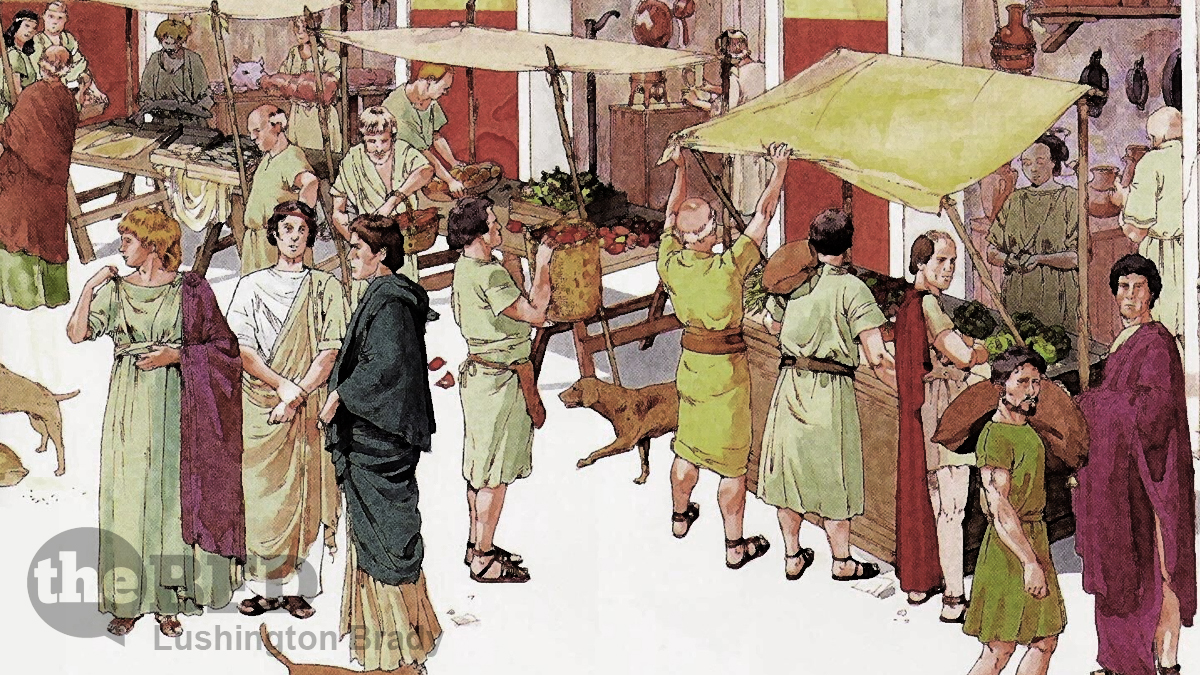What was the cost of living like, for an average Roman?
This is one of the intriguing kinds of questions of history that are often almost impossible to answer. By and large, historical records are almost exclusively concerned with the doings of kings, queens, generals and the literate upper classes of ancient societies. (On a side note, as historian Geoffrey Blainey points out, the fact that we even have any contemporary mention of a lower-middle-class, Jewish carpenter in the Roman boonies is a remarkable fact in itself.)
But the sheer wealth of Roman artefacts enables us to get a glimpse of the economic conditions of ordinary ancient Romans.
The price of rye grain was the basic index of the Roman economy.
The common man fed on grain. This was so important that it had become the basic index of economic life in Rome, and could induce riots. The unit of measurement was the modius (about 8.7 litres) – A modius of rye could provide about 10kg of bread. In the first century under the Emperor Nero, and immediately after, it cost between 1 and 1.5 denarius or about 20 asses (1 denarius was worth 16 asses) to procure.
Using the amount of grain consumed daily by a Roman legionary as a reference, it is inferred that an adult man needed about 1.5 kg of bread per day. As a result, an individual had to spend approximately 0.17 denarius (median value) or about 3 asses per day to barely feed themselves. At the same time, workers earned between 5 and 16 asses a day which did not allow for the feeding and housing of a family. The poor population of Rome therefore depended on the grain largesse dispensed by the Emperor. These distributions of grain must therefore be seen as the predecessor of our social benefits.
So, it cost between 20% and 60% of a worker’s daily income to feed just themselves. By comparison, the average Australian spends about 7%. A British family of four spends about 12% of their income on food.
Around 300 AD, Emperor Diocletian issued an edict to try and control prices and inflation. The edict provided a list of state-controlled prices of commodities. It can be assumed that an as was somewhat equivalent to a modern Euro.
Pork should have cost around 8 asses per kilo (compared to 8 euros/kg in supermarket today), and 4 eggs (1.3 euros for four) or 2 kg of figs (1.6 euros/kg) had to cost about an as. In the same way, cheese of common consumption probably cost no more than 2 asses per Roman pound (324 g).
The Romans didn’t just eat at home. They used to have lunch out, when they were working. The practice was well established and we know the indicative cost in one of the many popinas, or public kitchens, that offered food. A meal cost about 3 asses, including drinks[…]cost[ing] 1 as (a pitcher of one third of a litre of table wine).
What about accommodation?
In Rome many were tenants and the rent varied greatly depending on the quality of the accommodation and the neighbourhood. To speak only of the most affordable, it will be said that a tenant had to pay between 50 and 250 denarius per year for a slum. A luxurious apartment[…]would have cost his tenant about 30,000 denarius a year.
Thierry Bontoux
Salaries in Rome around 70 AD were:
Legionary, 10 asses a day;
Thierry Bontoux
Soldier in the praetorian guard, 30 asses a day;
Laborer, 5-16 asses per day (but seasonal jobs);
Qualified miner, 6-10 asses per day;
Tradesman, 12 asses a day;
Arithmetic teacher, 12-20 asses a day, housed and fed.
So an average labourer would have spent at least 20% of their income, just to live in a slum. The average Australian spends about 12% of their income to live in what, to the Romans, would seem like patrician luxury.
Add to that a modern diet that even emperors would have envied, and it’s pretty clear that “the good old days” really weren’t.
Please share this article so that others can discover The BFD

